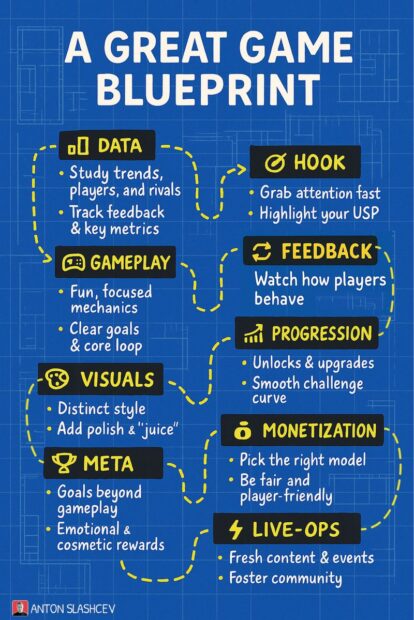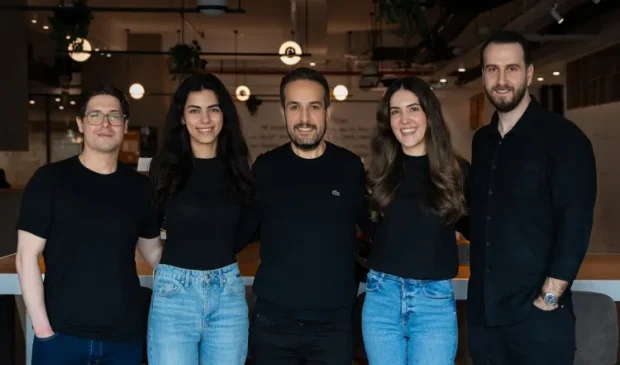
Building or testing mobile ads? Concise, no-BS Q&A here! 😅
We deep dive with Brijesh, Co-Founder of Segwise, to decode exactly what’s working right now!
We chatted about their latest Playable Winning Patterns Report!
Segwise has built AI Agents to improve creative ROAS, and they used their AI Creative Agent to tag and analyze top-performing playables launched between Jan-March 2025!
They also dropped a lifetime free tool that will help you experiment with playables!
Brijesh, what made you put this report together?
It’s pretty straightforward, at Segwise we want UA teams to create high-impact creatives that convert. And we feel this can be achieved by swapping subjective hunches with hard data-backed creative decisions.
Which is why we tagged and analyzed over 200 top-performing playables launched in Q1 2025 using our Creative Agent. We used it to tag 30 variables/creative elements per ad, from video lead-ins and CTA placement to visual hooks and emotion-driven cues.
And from that, we identified winning patterns that high-performing playables share. The idea was to turn creative tags data into a creative blueprint for anyone reading the report.
Why focus specifically on “New” playables?
Because the ad creative ecosystem evolves fast. If you only study old winning ads, you risk copying what used to work.
Instead, we looked at Playable ads launched between Jan-Mar 2025, sorted by impression volume across all major ad networks. We feel this works as a great proxy in terms of what’s new in experimentation and working.
These are creatives getting real traction right now and give us a true picture of the creative patterns in play; and the current winning formula.
Which networks are dominating playables?
I think we all know the answer to that! It’s AppLovin by a landslide.
- 84% of all new playable ad impressions in Q1 2025 came from AppLovin.
- Unity (7%) and Mintegral (6%) were at par of new playables – most probably for targeting experiments.
We also saw new playables being tested in India and the US. I’d assume India is for rapid A/B tests for creative concepts, and the US for validating winners with positive ROAS. A lot of creative iteration is happening between those two markets.
Let’s talk formats – are these full interactive HTML5 playables?
Not quite:
- 82.5% of the playables started with a lead-in video (usually a video ad), followed by the interactive playable.
- Only 17.5% were fully interactive or pure playable from the start.
You know, we saw something really interesting, almost 10% of the top performing “playables” were actually just video HTML embeds? AND the top performing playables in fact were a video HTML embed as well, with 130M+ Impressions from Uno!
So we built a free tool that converts regular video ads into AppLovin-friendly playable embeds:
And are those lead-in videos just random filler, or do they matter?
They seem to matter a lot. If used correctly, I think this precursor video adds more context to the interactive playable by creating a sense of continuity and boosting engagement.
- 68% of the lead-in videos were in some way contextual snippets to the interactive playable
- That tight continuity makes the ad feel more cohesive and increases engagement.
What did you learn about Intros & Hooks?
Great playables don’t just start fast, they start smart. We all know how Voodoo mastered the launch mechanism in Mob Control creatives. Similarly, a lot of the interactive playables (49%) actually had an opening scene.
- 49.7% had an “opening scene” before the interactive playable/gameplay experience.
- And of those, 89.1% were narratively or visually connected to the game itself, with either a cinematic animation, a snippet from the lead in video, or in some bizarre cases where the entire lead in video plays all over again in the opening scene.
What works best:
- Opening animations contextual to the interactive experience
- Instruction texts (e.g., “Swipe to move”) dominate, but challenging text could amplify the impact
- Visual elements that add exaggeration or humor, or drive curiosity
It’s not just about saying what to do – it’s about making players feel something in the first 5 seconds.
What about in-game elements — anything surprising?
Yes, a few things stood out:
- Only 24.3% displayed game currency, which was a nice touch.
- 33.5% used unique elements like progress bars or countdown timers – increasing urgency and framing.
- A creative few (54.8%) used hybrid mechanics like merged IQ meters + progress meters together.
So don’t just rely on basic gameplay; instead, prop it up to visualize progress or stakes in play.
Check out the full Playable Winning Patterns Report HERE 🕺🏻







